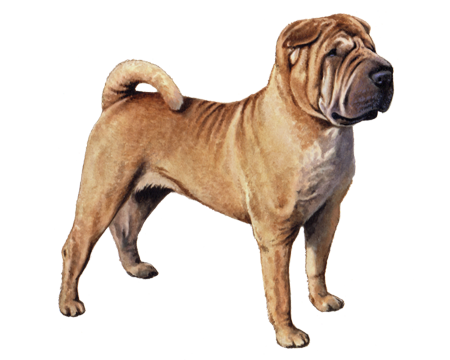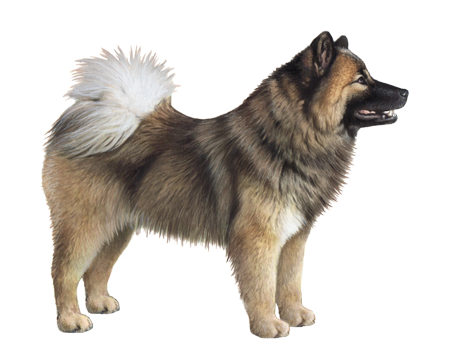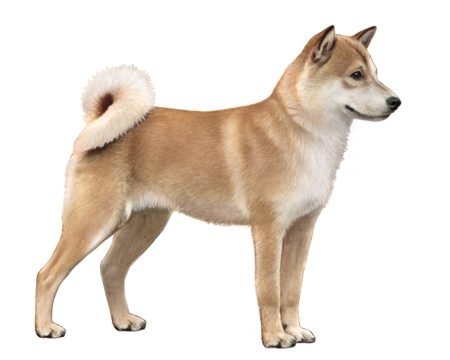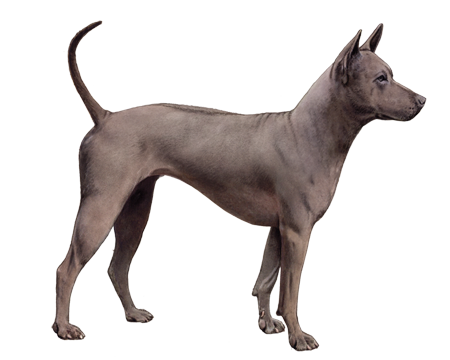
East Siberian Laika
East-Siberian Laikas are intelligent, energetic, and watchful dogs. They have strong hunting instincts, fast reactions, and an incredible sense of direction.
Interested in discovering if your dog is an East Siberian Laika?
Check out Wisdom Panel's DNA tests.

East Siberian Laika Traits
General Appearance
The East-Siberian Laika is the largest of the Russian Laika breeds. These strong dogs have a heavy bone structure and a square or slightly rectangular body.
Coat and Colouring
This breed has a medium-length, double coat consisting of a coarse, straight outer coat and a soft, dense undercoat. The fur forms a collar around the neck and shoulders, and male dogs have a mane over the withers.
Standard colors include salt and pepper, white, grey, black, red, and brown. Some coats have patches and ticking.
Distinctive Physical Traits
Laikas have a wedge-shaped head, dark, oval eyes, prick ears, and a tail that curls over the back.
East Siberian Laika Temperament
The Laika is a courageous, affectionate, highly versatile breed. These dogs are protective of their people and make excellent guard dogs. But they have a territorial nature and may act aggressively toward dogs of the same sex that approach their property.
Male Laikas are typically friendly toward strangers, whereas females tend to be more aloof. It's essential to socialize these pups so they learn to respond appropriately to different people and situations.


East Siberian Laika History
The East-Siberian Laika is one of several Laika breeds found in Russia and Siberia. As their name suggests, they originated from the eastern part of Siberia, east of the Jenisej river. The breed belongs to the Spitz family of dogs—the group most closely related to wolves.
Siberian hunters couldn't afford specialized dogs for different types of prey. So, East-Siberia Laikas hunted everything from forest birds to furred animals to big game. Before it was outlawed, they even hunted Siberian tigers. These powerful dogs also pull sleds during long hunting expeditions.
Laikas bark to alert the hunter when they locate game. That's how they got their name—the Russian word "laika" is a noun derived from the verb "layat," which means "barker."
The UKC recognized the East-Siberian Laika in 1996.
East Siberian Laika Care
Nutrition
East-Siberian Laikas thrive on a high-quality diet formulated for their activity level, medium size, and life stage (e.g., puppy, adult, senior). To help your dog maintain a healthy weight, monitor their food intake—including treats. As a rule, treats should make up no more than 10% of a dog's calories.
Grooming
Laikas are naturally clean dogs that don't produce much (if any) smell. But their thick coats do need regular brushing to remove loose hair and prevent mats and tangles.
Most of the year, brushing with a pin brush once or twice a week will suffice. But during seasonal shedding periods, daily brushing is needed to keep the hair from getting out of control.
Beyond that, regular nail trims, ear cleanings, and teeth brushing should also be part of a well-rounded grooming routine.
Exercise
This active breed needs a lot of daily exercise to be happy and healthy. Long walks, hikes, and games within a fenced backyard will provide an outlet for their boundless energy.
Training
Laikas are intelligent and very responsive to training. A gentle and varied (to keep things interesting) approach is the best way to teach these pups.

Breed Group
Asian and Oceanian
The Asian and Oceanian group is comprised of breeds whose origins lie in Asia, which have spread as far as Australia, the islands of the Pacific, and the Arctic. This group is possibly the most ancient of all breed groups and were bred for a variety of purposes, including guarding, hunting, and as draft dogs.






















































